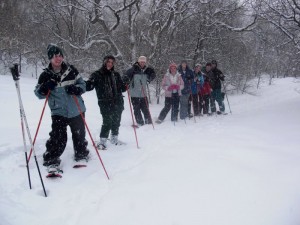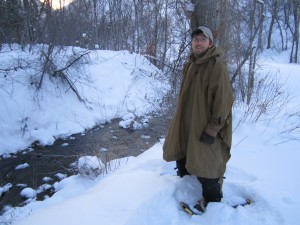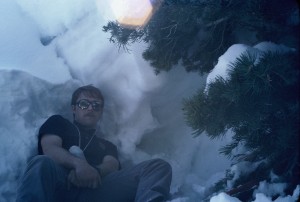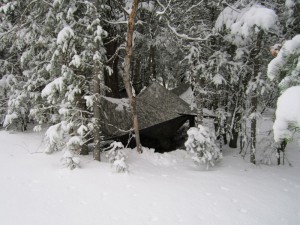Making the Most of Camouflage
There are so many camo patterns in the world it can make your head spin. I know of one company alone in the USA that prints in excess of 40 patterns. There are generally two classes of patterns, military and hunting. The difference is supposed to be in what you are hiding from, humans or animals. Hunting patterns usually feature representations of various plants or plant parts, leaves, branches, bark, reeds, etc. Most military patterns are random shapes of varying sizes and colors. Some are digital or in other words pixilated. A variation is to blur the lines between shapes and colors. Other considerations in camo are light, heat and radar signatures, dealing with these is typically done with specialized coatings in the fabrics.
Note: Pictures used are for representative purposes, we feature three of our PSS Ponchos and one PST Tarp in MARPAT, a digital pattern.
How Camo Works
Essentially a person is a very different shape than the plants and landscapes found in nature and the linear layout of urban areas. The whole idea behind camouflage is to try to blend into whatever area the person is located. Probably billions of dollars have been spent in research to find the ultimate camo patterns.
I’m not here to tell you what the best all-round camo is, that is way beyond the scope of this short article, rather I want to talk some general terms and give some ideas that will help make most camos more effective, and to avoid traps that can turn even the very best camo into a worthless mess. Also I am not going to discuss why you may be desirous to be stealthy, it could be paintball, airsoft, hunting, military, evac and evade, etc., whatever the reason, the idea is to be successful.
At Wilderness Innovation we are not seeking to carry all the camo styles we can find, in fact we can’t use most of them. The vast majority of camo that is printed is for clothing, followed by packs and other gear items. A small percentage of fabric is printed for tarps and ponchos, so we are quite limited in what is available to us for the gear that we make. People ask all the time, can we make a tarp or poncho out of such and such camo, most of the time the answer is no since the majority of patterns are not printed on suitable fabrics for tarps.
General Shelter Tips
- It is far easier to do concealment in static situations, that is when you are not moving, in fact in these cases you would be surprised by how many supposed inferior camo’s can be quite effective. The trick is in how well you set up.
- Staying concealed while moving can be very difficult since it involves not only the camo you are using but also how you move.
Tips Related to Our Gear
- A tarp is more difficult to conceal than a person in a poncho primarily due to its size and shape
- When setting a tarp try to hide as many of the straight lines as you can. This can be done many times by the location you choose.
- If there is a good bit of brush and limbs these can obscure the outlines of the tarp.
- If there are not enough around you can add some by incorporating them into the support frame of the tarp.
- You can also tie small tree branches or boughs to parts of the tarp at tab locations.
- A lean-to can be made with a stick frame, a tarp laid over that and finally a small amount of native vegetation laid over it. This is much quicker to do and more effective than a shelter of all native material.
- If you are hiding out in your poncho, first of all get comfortable. Try to have a few things in front of you that block or obscure part of your profile.
- Minimize your profile.
- Make sure your face and skin do not stand out, cover, paint or coat with mud.
Back-lighting is one of the biggest deal killers no matter how good your camo pattern is
Most people don’t experience this problem since they are primarily just using camo clothing which is tough to backlight. Often a shelter can be set up and it is awesome, well hidden, but as the day wears on the position and angle of the sun or even a bright moon suddenly throws light behind your shelter, the shelter is now lit up like a neon sign. Some tips on how to avoid this problem are listed below.
- Location is sometimes the easiest solution as it requires no additional measures. Try to pitch your shelter where strong lighting is blocked from the rear.
- Choose a camo that has an opaque coating on the fabric underside. These fabrics look the same on the face or outside but the underside instead of a clear coat for water protection, is colored so that light does not penetrate.
- Usually opaque coatings are called “blackout” coatings. They are not always black, we have carried some fabrics that have Coyote Brown, Tan, or OD Green blackout coatings.
- Currently we have Woodland with a Tan blackout coating (TBO), and at times a limited amount of ACU universal digital with a black blackout coating.
- At times your chosen camo pattern may not be opaque, but semi-opaque. The MARPAT we carry on a limited basis is like that. It works very well because although its Coyote undercoat lets some light through most of it is blocked.
- Darker solid colors can also do well in avoiding backlighting, like our Coyote, it is not that bright generally when lit from the back. Our Black SilNylon does not light up, but becomes slightly grey under strong lighting, so it does quite well.
- A caveat with the blackout coated fabrics is that they are a little heavier than the clear coated or silicone coated, they are still light weight however.
- Fabrics with blackout tend to have a more mellow coloration, note the top photo and look at the two Woodlands, this does not make the standard Woodland no good, see middle photo, but it just something to consider based on your desired use.
One additional consideration is the color of the blackout coating. We originally used ACU universal digital with Black black-out. One of the difficulties inside a shelter made using this fabric is that it is very dark and is hard to light since the coating absorbs the light and does not reflect it. Shelters with Coyote or Tan black-out still block light passing through but reflect inside so the shelter is more hospitable.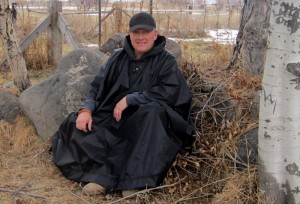
Hopefully these tips can help you to minimize your visibility in whatever location you are in.
Until next time, this is Perry Peacock, “Simplifying Survival”




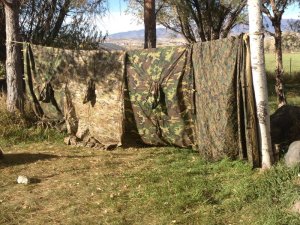
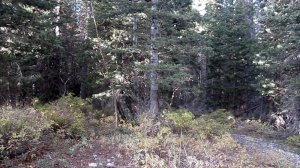
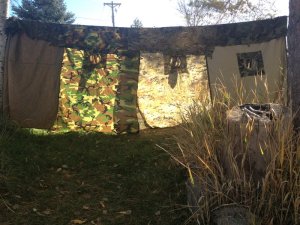
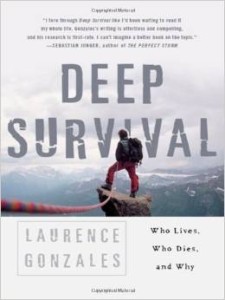
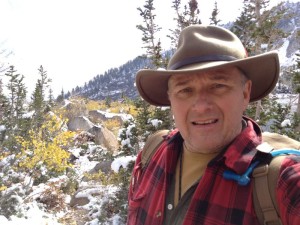

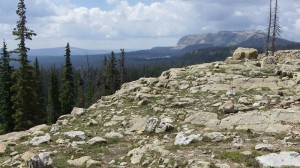
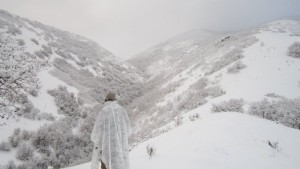
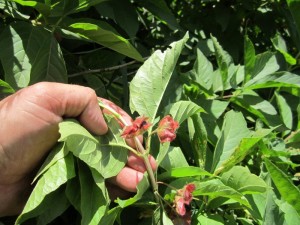
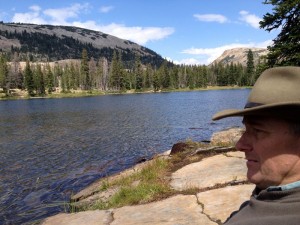 term, fasting may be easier and much safer. In my little experience of nearly 4 days without any food, the mental aspect was much more apparent than the physical lack of food. I experienced no pain, very little discomfort, and little noticeable energy loss. I am planning in the near future to do another experiment at perhaps 5 or 6 days without any food on a trek.
term, fasting may be easier and much safer. In my little experience of nearly 4 days without any food, the mental aspect was much more apparent than the physical lack of food. I experienced no pain, very little discomfort, and little noticeable energy loss. I am planning in the near future to do another experiment at perhaps 5 or 6 days without any food on a trek.
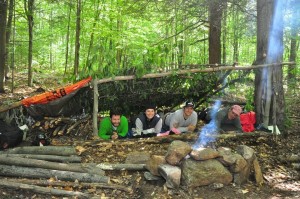
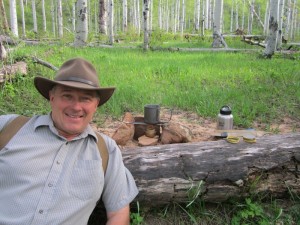
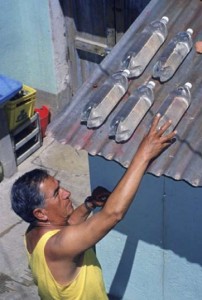
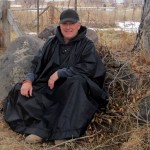
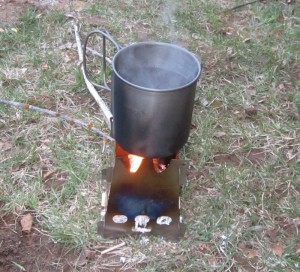 • Hyperthermia (core temperature too hot)• Hypothermia (core temperature too cold) • Headache • Constipation • Lack of coordination – poor motor skills • Inability to analyze and think properly • Pain and other discomfort • Frostbite You can’t rely on thirst to accurately trigger the desire to drink. At times it may not turn on till too late, thirst may also be alleviated too quickly by sips of water when the need is actually much greater than that. In the effort to drink sufficient water it may be difficult to do when drinking cold water. Hot water is much easier to assimilate and may be utilized by the body more quickly. Each day a person should drink enough water to expel about a quart of urine each day. By drinking plenty of water a person may realize the ability to have more than twice the energy they would otherwise have, without needing to consume food for energy. Everything in your situation is benefited by your body having plenty of water in it. Cold weather does not diminish the need for water. Cold winter air is usually very dry, consequently with each breath you take you are depleting the moisture in your body. It is a Myth that you cannot eat snow to put water into your body, I detail how to properly eat snow to successfully add to your water reserves. Done correctly there is not risk of damage to lips and mouth, nor a danger of bringing on hypothermia, to the contrary by delaying getting water the risk is substantially increased. Ideally a person hiking or doing a fair amount of work may take in a cup of water every 15 minutes for maximum fatigue resistance. For all the information on the subject listen to our audio cast –
• Hyperthermia (core temperature too hot)• Hypothermia (core temperature too cold) • Headache • Constipation • Lack of coordination – poor motor skills • Inability to analyze and think properly • Pain and other discomfort • Frostbite You can’t rely on thirst to accurately trigger the desire to drink. At times it may not turn on till too late, thirst may also be alleviated too quickly by sips of water when the need is actually much greater than that. In the effort to drink sufficient water it may be difficult to do when drinking cold water. Hot water is much easier to assimilate and may be utilized by the body more quickly. Each day a person should drink enough water to expel about a quart of urine each day. By drinking plenty of water a person may realize the ability to have more than twice the energy they would otherwise have, without needing to consume food for energy. Everything in your situation is benefited by your body having plenty of water in it. Cold weather does not diminish the need for water. Cold winter air is usually very dry, consequently with each breath you take you are depleting the moisture in your body. It is a Myth that you cannot eat snow to put water into your body, I detail how to properly eat snow to successfully add to your water reserves. Done correctly there is not risk of damage to lips and mouth, nor a danger of bringing on hypothermia, to the contrary by delaying getting water the risk is substantially increased. Ideally a person hiking or doing a fair amount of work may take in a cup of water every 15 minutes for maximum fatigue resistance. For all the information on the subject listen to our audio cast – 